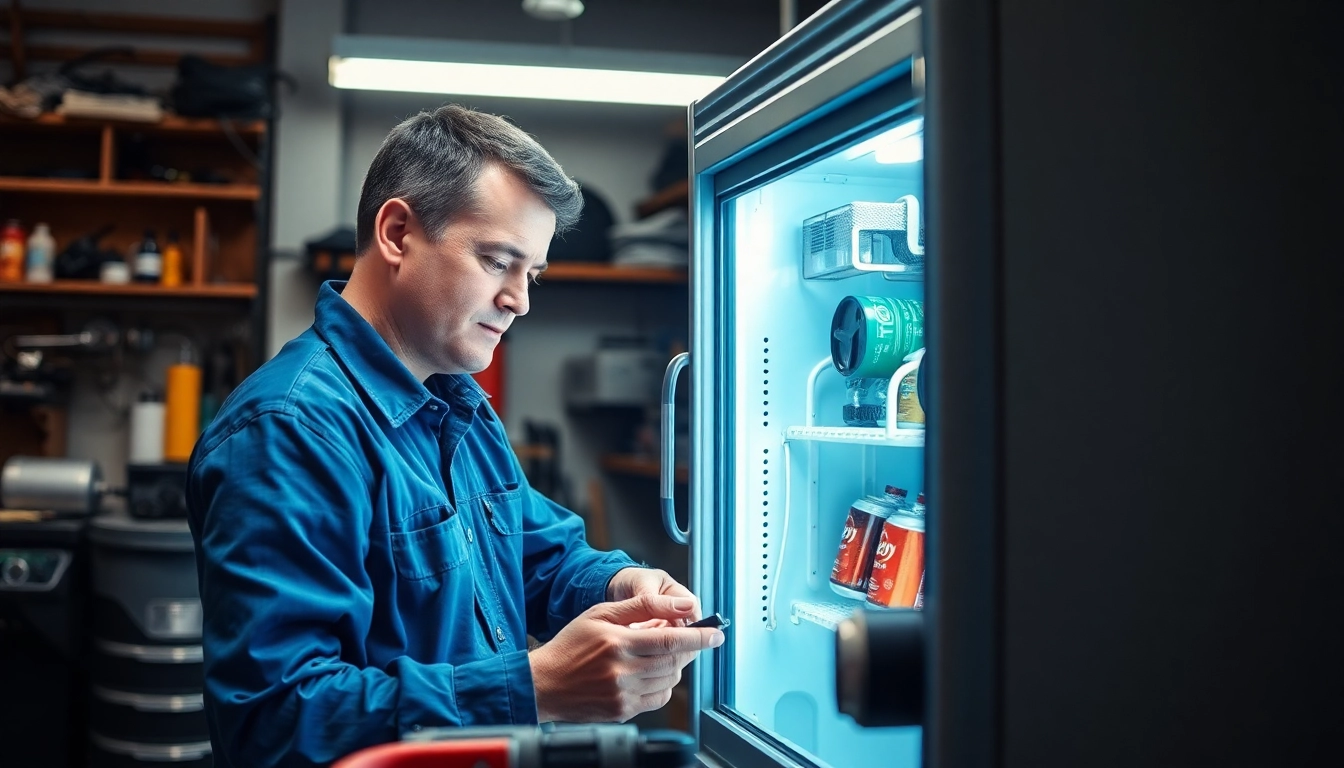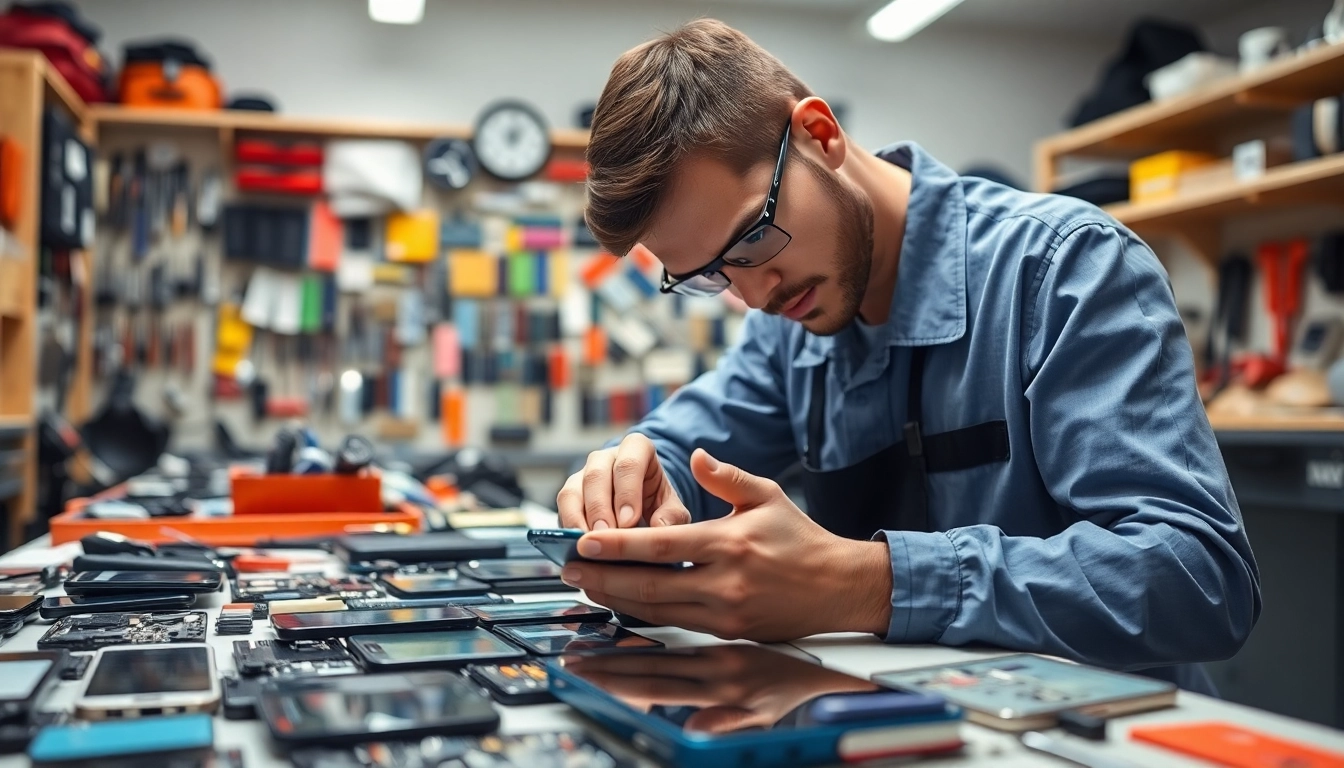Understanding Soda Cooler Mechanics
Soda coolers are essential appliances in homes, convenience stores, restaurants, and cafes, ensuring that beverages are chilled and readily available. Understanding how these coolers work can significantly enhance your ability to maintain and repair them. Whether you’re facing cooling issues or just want to prolong the lifespan of your unit, grasping the key mechanics can help you achieve these goals. This comprehensive guide will delve into the intricacies of soda cooler repair, encompassing troubleshooting methods, DIY repair techniques, professional advice, and maintenance tips. For additional assistance with soda cooler repair, specialized services are also available.
The Refrigeration Cycle Explained
The refrigeration cycle is fundamental to understanding any cooling appliance, including soda coolers. It primarily involves the following key stages:
- Evaporation: The cycle begins as refrigerant, in a low-pressure gaseous state, enters the evaporator coil. Here, it absorbs heat from the interior of the cooler, causing it to evaporate and cool down the air inside.
- Compression: The gaseous refrigerant is then compressed by the compressor, raising its pressure and temperature, transforming it into a high-pressure gas.
- Condensation: Next, the high-pressure gas enters the condenser coils, where it releases heat to the surrounding environment. As it cools, the refrigerant turns back into a liquid state.
- Expansion: Lastly, the refrigerant passes through an expansion valve, where it experiences a sudden drop in pressure, returning to a gaseous state and restoring the cycle.
This cycle must run smoothly for a soda cooler to function effectively. Any issues at any stage, such as refrigerant leaks or compressor failures, can lead to diminished cooling performance.
Key Components of Your Soda Cooler
Understanding the primary components of your soda cooler is crucial for diagnosing issues and performing repairs:
- Compressor: Often referred to as the heart of the cooling system, it compresses the refrigerant and circulates it through the cooling system.
- Condenser Coils: These coils release heat from the refrigerant as it condenses back into a liquid. A dirty or obstructed coil can lead to cooling inefficiencies.
- Evaporator Coils: Located inside the cooler, these coils absorb heat, providing the necessary cooling for the stored beverages.
- Expansion Valve: Regulates the flow of refrigerant into the evaporator coil. Blockages or malfunctioning of this component can disrupt the cooling cycle.
- Thermostat: This device regulates the temperature within the cooler. If faulty, it may result in inconsistent temperatures or complete failure.
Familiarizing yourself with these components will empower you to identify issues more effectively.
Signs Your Soda Cooler Needs Repair
Recognizing the signs of malfunction early can save you time and money. Here are common symptoms indicating that your soda cooler may need repair:
- Insufficient Cooling: If drinks are warmer than usual, it’s a sign that the cooling cycle may be failing.
- Unusual Noises: Uncommon sounds like grinding or hissing can indicate compressor issues or refrigerant leaks.
- Frequent Cycling: If the cooler cycles on and off repeatedly, it may be due to a faulty thermostat or pressure control problems.
- Frost Build-up: Excessive frost around the evaporator coils can hinder airflow and cooling; this may indicate a refrigerant leak.
- Power Issues: If the cooler won’t turn on or powers down unexpectedly, there may be issues with the electrical components.
Being aware of these signs can help you take immediate action and prevent further damage.
Troubleshooting Common Soda Cooler Issues
Before resorting to professional repairs, troubleshooting is a practical first step. Here are common problems and how to identify them:
Identifying Cooling Failures
Cooling failures are among the most distressing problems. Steps to troubleshoot include:
- Check the power supply: Ensure the cooler is plugged in and that there’s power to the outlet.
- Inspect the temperature settings: Verify that the thermostat is set to an appropriate temperature.
- Examine air circulation: Ensure that no items are obstructing airflow around or inside the cooler.
- Inspect condenser coils: Dirty coils should be cleaned to improve heat dissipation.
- Listen for the compressor: If it’s not running, the issue might be an electrical or mechanical failure.
Tracking these factors can often indicate whether the issue is with a major component.
Power Problems: What to Check First
Prioritizing the power supply is essential when troubleshooting soda cooler issues:
- Check for blown fuses or tripped circuit breakers.
- Examine the power cord: Look for signs of damage such as fraying or cuts.
- Verify outlet functionality: Use a multimeter to check the voltage output.
By systematically assessing power-related issues, you can quickly identify whether to proceed with further troubleshooting.
Leak Detection and Repair
Refrigerant leaks can be challenging to diagnose but are critical to address. Here’s how to detect and manage them:
- Visual Inspection: Look for oily spots or frost buildup around the refrigerant lines.
- Listening: A hissing noise may indicate a refrigerant leak.
- Pressure Testing: Hiring a professional for pressure testing can confirm leaks.
If a leak is confirmed, immediate repair is necessary to restore the unit to working condition and avoid further complications.
DIY Soda Cooler Repair Techniques
For those willing to tackle repairs themselves, understanding essential techniques is vital. Safety and proper tools should always be a priority.
Safety Precautions Before Starting
Before attempting any repairs, always ensure to follow these safety guidelines:
- Unplug the cooler from the power source to prevent electrical shock.
- Wear protective gloves and goggles to safeguard against refrigerants and sharp components.
- Be cautious of sharp edges and components within the cooler.
Taking these precautions will help ensure a safe repair process.
Essential Tools for Soda Cooler Repair
Having the right tools can make a significant difference in repair outcomes. Here’s a list of essential tools for soda cooler repairs:
- Multimeter: For testing electrical components and circuits.
- Wrenches and screwdrivers: For loosening and tightening screws and fittings.
- Refrigerant gauge: To monitor and measure refrigerant levels.
- Cleaning supplies: Soft brushes and cloths for keeping coils and components clean.
- Vacuum pump: Useful for ensuring proper evacuations of the refrigerant system.
These tools can simplify the troubleshooting and repair process.
Step-by-Step DIY Repair Guide
Here’s a generalized process to follow for common repairs:
- Identify the issue: Use the troubleshooting methods outlined previously to determine the specific problem.
- Gather your tools: Make sure you have everything you need before starting the repair.
- Make necessary repairs: For example, replace a faulty thermostat or clean the condenser coils.
- System check: After repairs, it’s essential to run a check to ensure everything is functioning correctly.
- Monitor performance: Keep an eye on the cooler for a few days to ensure the problem is resolved.
These steps can help you effectively address common issues without professional assistance.
When to Call a Professional for Soda Cooler Repair
While DIY repairs can be rewarding, some situations require professional intervention. Knowing when to call for expert help can save you time and prevent further damage.
Assessing Repair vs. Replacement Decisions
Evaluating whether to repair or replace your soda cooler involves several considerations:
- Age of the Unit: An older unit may not be worth repairing if it requires significant investment.
- Cost of Repair: If repairs exceed 50% of the cost of a new unit, replacement could be more economical.
- Performance History: Frequent issues with a unit may suggest it’s time for a new purchase.
Being honest about these factors will help in making the best decision.
Finding Reliable Repair Services
When opting for professional repair, choosing the right service provider is essential. You can do this by:
- Researching local appliance repair businesses with strong reviews.
- Asking for estimates and comparing pricing and service options.
- Checking for certifications or experience related to commercial cooling systems.
Each of these steps can guide you in choosing a reliable service that fits your needs.
Cost Considerations for Soda Cooler Repair
Costs can vary widely based on the issue and location. Here are some typical repair costs you may encounter:
- Compressor replacement: $300 – $800
- Thermostat replacement: $100 – $300
- Condenser coil cleaning: $50 – $150
Understanding these costs can help you budget appropriately for repairs or replacements.
Maintenance Tips for Optimal Cooler Performance
Implementing effective maintenance strategies can extend the lifespan of your soda cooler. Here are crucial tips to follow:
Regular Cleaning and Care
Regular maintenance is essential to ensure your unit runs effectively:
- Clean condenser coils every six months to enhance cooling efficiency.
- Clear out any debris from around the cooler for better airflow.
- Wipe down the interior surfaces regularly to prevent odors and maintain hygiene.
These practices can significantly reduce the chances of breakdowns and maintain optimal performance.
Signs of Wear: Components to Monitor
Keeping an eye out for wear and tear can prevent major issues:
- Inspect rubber seals for cracks and wear; replace them when necessary.
- Monitor refrigerant levels regularly to detect leaks early on.
- Check heard noises: If sounding abnormal, have it checked by a professional.
Acting on these signals can help maintain the integrity of your cooler.
Tips to Extend the Life of Your Soda Cooler
Consider incorporating these additional measures for longevity:
- Avoid overloading the cooler to ensure proper airflow.
- Keep the cooler out of direct sunlight to reduce strain on the compressor.
- Utilize energy-efficient settings if available in your model.
By implementing these strategies, you can effectively extend the life of your soda cooler.



